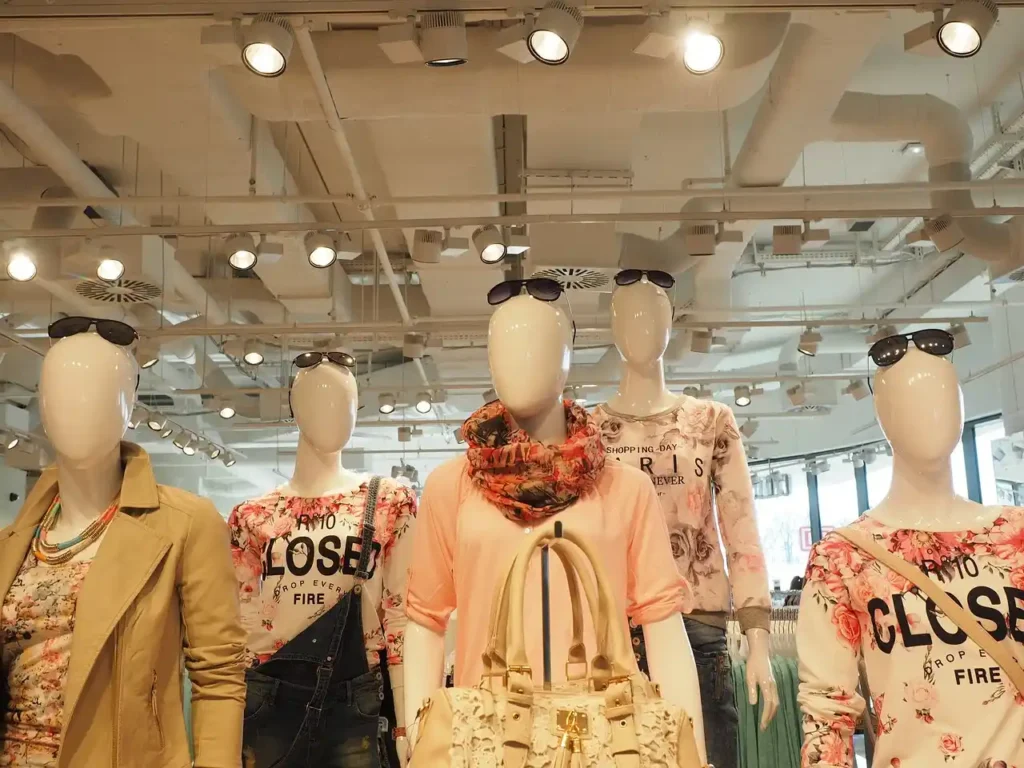
United States of America: A Fashion Industry Powerhouse
Historical Roots of American Fashion
The earliest threads of American style are woven from a rich tapestry of historical influences, from colonial times to the modern era. America’s fashion industry pulses with creative energy, thanks to its fearless designers, legendary labels, and vibrant cultural melting pot. You can’t ignore the pull of American fashion, from the haute heydays of yesterday to the avant-garde and eco-friendly movements stirring up the scene today.
Early American Fashion
Additionally, European trends, especially from England and France, shaped the fashion landscape of early America, which was characterized by simple, practical clothing made from natural fibers like linen and wool.
With the colonies’ gradual expansion, fashion adapted to the changing tides of wealth and cultural fusions that forged the country’s identity. Beyond the lavish balls and extravagant spending of America’s privileged elite, a mighty industrial machine roared to life.
The Gilded Age and Industrial Revolution
As the Gilded Age unfolded, America witnessed a Fashion metamorphosis, propelled by the frenetic pace of industrialization and economic expansion. Furthermore, the wealthy elite embraced European luxury brands and extravagant styles.
In addition, the middle class sought to emulate their upper-class counterparts. Fashion was shaken to its core as new textile innovations and large-scale manufacturing methods spawned during the Industrial Revolution.
Iconic American Brands
With Ralph Lauren, you’re enveloped in a cozy world of camel hair coats and gleaming oxfords, where heritage meets comfort.
A half-century ago, in 1967, the first chapter of Ralph Lauren’s story unfolded, and today, it continues to captivate.
The brand now bursts with an eclectic assortment of fashionable wear, room enhancers, and fresh potions that delight and grab our senses.
Levi Strauss & Co.: Levi’s denim jeans now symbolize American independence and defiance as a cultural icon. This organization was founded in 1853 with the belief that innovation and societal benefits are inextricably linked.
Tommy Hilfiger is well-known for its traditional, American style and collaborations with celebrities like A$AP Rocky and Zendaya. A major rival has emerged in the global fashion landscape, with streetwear and casual wear as its main offers.
Calvin Klein masterfully toes the line between refined elegance and sultry allure. Consequently, its lingerie and fragrance lines feel both comfortable and devastatingly attractive.
As the American fashion landscape has evolved over the past five decades, one constant has remained. Indeed, this brand’s tenacity to stay relevant radiates authority and timeless sophistication to this day.
Fashion Weeks and Events
New York Fashion Week: High atop the list of the most respected, this elite group has few equals. We see fashion as a direct reflection of our desires, societal norms, and cultural lineage. By the clothes we wear, we relay our worth, express our defiance, and communicate our identity – loud and proud.
For one fabulous week, New York City becomes the fashion capital of the universe. During this time, heavyweight designers parade their artistic vision, and the fashion elite swarm to witness greatness.
Additionally, the event, held twice a year in February and September, attracts fashion industry experts, celebrities, and media from all over the world.
Los Angeles Fashion Week features everything from ripped denim to high-end glamor on the runway, combining the vivid energy of streetwear with the sophistication of modern style.
Meet the creatives – a colorful mix of fresh faces and industry heavyweights – all gathering under one roof.
Other Fashion Events:
In addition to New York and Los Angeles, other major fashion cities in the United States include Miami, Chicago, and Atlanta. For fashion fanatics, these cities offer a paradise where stylesheets come alive with an intoxicating mix of swimwear spectacles, menswear blowouts, and breakthrough designer unveilings.
Moreover, each city contributes uniquely to the fashion scene, showcasing diverse and vibrant trends that captivate enthusiasts nationwide.
Cultural Influences on American Fashion Industry Hollywood:
Hollywood often serves as a wellspring for fashion trends, where celebrities unwittingly become trendsetters. Consequently, they inspire designers to create designs that echo their red-carpet looks.
Moreover, the fashion lexicon is filled with looks patented by Hollywood. For example, there are styles ranging from Casablanca’s exotic sophisticate to modern runway rebels who defy the red carpet’s traditionally stuffy norms.
Music: While words often fail us, music whisks us away to hidden realms, a sonic tapestry woven from threads of joy, sorrow, and rebellion, speaking directly to our hearts in a language all its own.
Fashion trends in America have historically taken cues from the rhythm and melody of the music scene. Decade after decade, legendary musicians rebrand their identities and breathe essence into fleeting styles. Consequently, they turn unlikely accessories into coveted staples that empower fashion directors, high-end provocateurs, and dream architects alike.
Moreover, these innovations allow us to celebrate originality and raise our style IQs.
Sports:
If you’re ready for an adrenaline rush, then sports is the place to be—offering electric atmospheres, dramatic upsets, and awe-inspiring feats.
As American fashion continues to evolve, it’s hard to ignore the significant contribution sports have made. Indeed, athletes and teams are essentially walking fashion billboards, sending bold style statements across the country.
Move over, skinny jeans – athletic wear is the new go-to for casual style. And sports brands are happily capitalizing on this trend, pivoting from mere athletic gear to full-on lifestyle collections.
Embracing the Mix: where everyone has a voice From runway shows to design studios, diversity and inclusivity have become hot topics in American fashion circles of late.
Emerging Trends and Innovations Sustainable Fashion:
Nowadays, fashion shows and advertising campaigns proudly display models of diverse racial backgrounds, body types, and gender identities. Two major areas are driving fashion forward: a larger presence of plus-size brands and designers deeply invested in reducing environmental impact.
The fashion industry’s dirty little secret is out – and now Americans are driving a movement towards more eco-friendly clothing, accessories, and everything in between. Fashion’s dirty secret—its environmental impact—is finally coming under scrutiny. Industry insiders are actively switching gears to prioritize sustainable materials, reduce waste, and improve worker treatment.
Streetwear and Urban Fashion: Fashion enthusiasts can’t deny it – streetwear has officially taken the reins in American style. With brands like Supreme, Off-White, and Fear of God leading the trend.
No-frills style born from hip-hop’s rebel heart, skate boarding’s fearless spirit, and graffiti’s fiery creativity, equaling one effortless, athletic mood that spits on dress-up pretenses.
Futuristic fashion’s cutting edge: the sweet spot where tech and style collide. Who would have thought that fashion and tech would finally collide, birthing an exciting trend that disrupts traditional norms and notions of style? Indeed, that’s techwear in a nutshell.
Welcome to a fashion-forward wardrobe that refuses to sacrifice style for comfort—or vice versa. Moreover, imagine clothing that’s not just stylish but clever too. Specifically, techwear incorporates clever features such as LED lights that illuminate your surroundings, intuitive Bluetooth connectivity, and automatic temperature adjustment that responds to your body heat.
The Future of American fashion Industry
American fashion is standing at the edge of a significant threshold, poised to take a bold leap into the unknown. Ahead of the American fashion industry lies a fork in the road, where opportunities and challenges intertwine. Consumer preferences are no longer static; they’re evolving rapidly due to globalization and e-commerce, challenging the industry to adapt swiftly.
American fashion has always been a master of reinvention, allowing it to thrive in the cutthroat global market. Its status as a global fashion powerhouse is a done deal – it’s going to keep shaping the industry for years to come.






